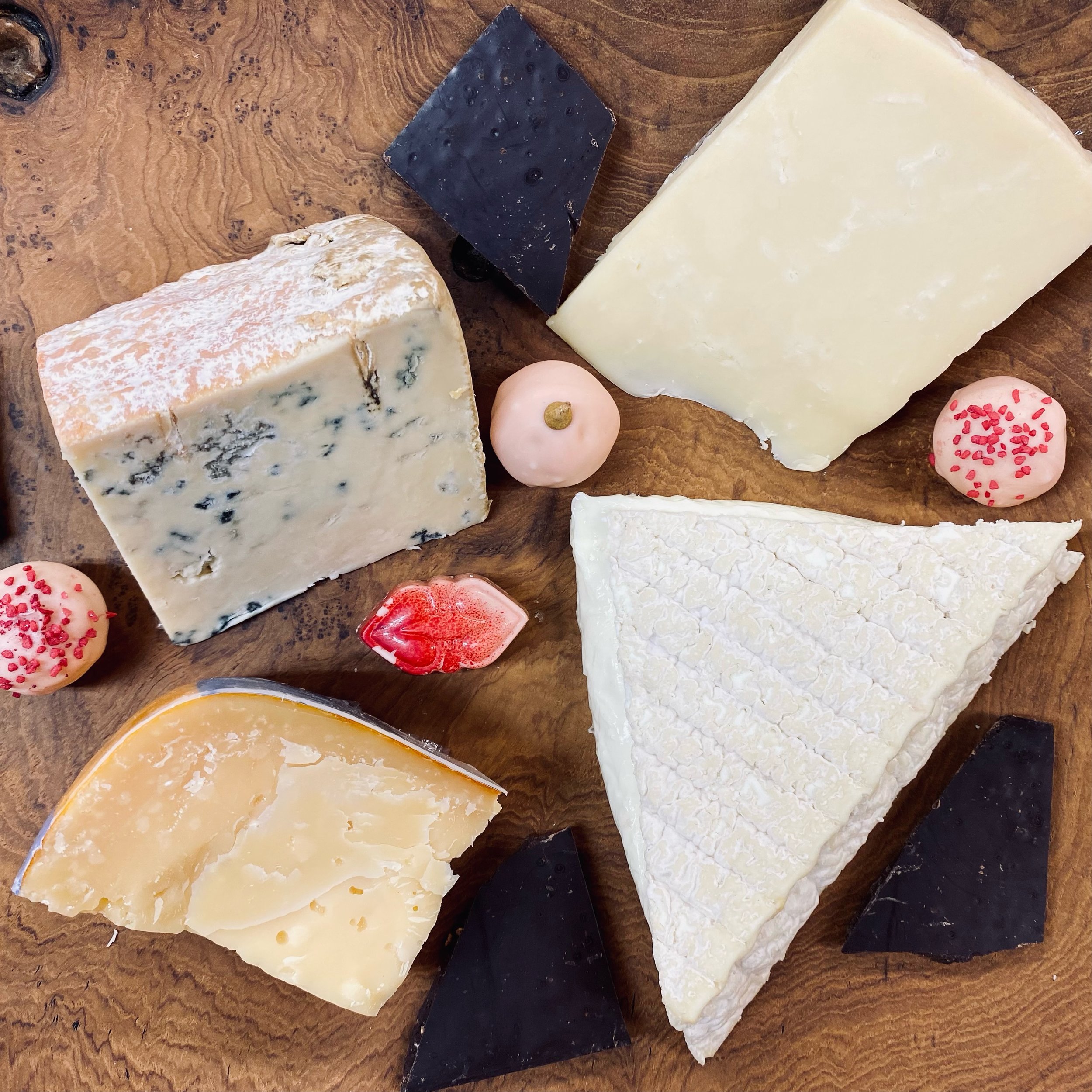Time for dessert! The Cheese Course
Chocolate Molten Lava Cake. Crème Brûlée. Peanut Butter Fudge Explosion. Yes, we Americans have quite the sweet tooth when it comes to dessert. Today, however, we’re urging you to think outside the candy box and consider cheese for dessert!
Serving a few small hunks of cheese after dinner is a very popular European tradition.
“In Europe, cheese is a natural follow-up to meals. The cheese is usually served at the dinner table with some good bread, and if no dessert is planned after the cheese course, ripe or dried fruits, nuts, or other accompaniments might be offered with the cheese.”
Enjoying a meal with family and friends is an experience … and one that should be savored until the very last drop. Cheese lends itself beautifully to extending time together in a well-balanced, well-thought way.
“It’s a ritual that prolongs the conversation, balances the booze, and assuages any lingering hunger.”
The Word On Cheese Culture - Ruminations: In Defense of the Dessert Cheese Course
Think about how you feel after taking the last bite of a rich, chocolatey dessert. In most cases, you were already full but just couldn’t resist. However, a little bit of cheese, served at room temp alongside some light accouterments, will have a very different effect. A cheese course at dessert is simplistic. It’s meant to leave you feeling fulfilled … not over filled, busting at the seams, or stuffed beyond belief.
Let’s for a moment take an imaginary trip to France. We’re out to eat at a restaurant that’s considered a hidden gem by the locals. The lights are dim, the wine is still flowing, and the meal was delicate, fresh, and satisfying. As we’re chatting, a cart, or chariot de fromages, pulls up alongside the table. It’s filled with a selection of cheeses, each of which has its own story and purpose. After the waiter shares details on milk, region, and styles, it’s time to decide. What cheeses will grace your plate this evening? Let us offer you some suggestions!
Here are 4 delightful cheese pairings we urge you to try during your next dessert course:
Ossau Iraty + Fresh Figs
Wine Pairing = Port
Ossau Iraty is believed to be one of Europe’s oldest cheeses. The beautiful visual of its smooth ivory paste is followed up with aromas that are buttery and sweet. This is a medium-firm cheese, aged for 12 months, with notes of toasted wheat, roasted nuts, fresh grass and wildflowers. Fresh figs pair beautifully with the complexity of this cheese without overpowering it.
Tres Leches + Strawberry Jam
Wine Pairing = Sherry
Tres Leches, which means 3 milks in Spanish, is a Spanish cheese made from (you guessed it) cow, goat, and sheep milk. It’s aged for 6 months and gets rubbed with olive oil during this time, which helps keep the inner paste moist. It’s creamy and nutty offering plenty of flavor yet is still pleasing to a more delicate palate. The nuances of each style of milk in Tres Leches pop against the delicate sweetness of the strawberry jam.
Ur-Eiche + Macadamia Nuts
Wine Pairing = Bordeaux
Ur-Eiche (loosely meaning “old oak”) is a raw cow’s milk Alpine-style cheese produced in Switzerland. It smells like pineapple and exhibits flavors of toasted brioche and macadamia nuts. Once produced, wheels are regularly treated by hand with oak wood extract. This imparts a lovely barrique, or barrel-aged, flavor into the cheese. The subtle sweetness of the macadamia nuts plays wonderfully off the saltiness and nutty notes of the cheese.
Arethusa Blue + Dried Cherries
Wine Pairing = Port
Arethusa Blue, made in Litchfield, CT, captures the rustic elegance of farmhouse blues from the British Isles. Chocolatey and toasty ... sweet yet pleasantly salty ... firm yet creamy ... this cheese boasts a deep, multidimensional flavor. The chocolate notes in Arethusa Blue are gracefully accentuated when positioned alongside sweet and tart dried cherries.


